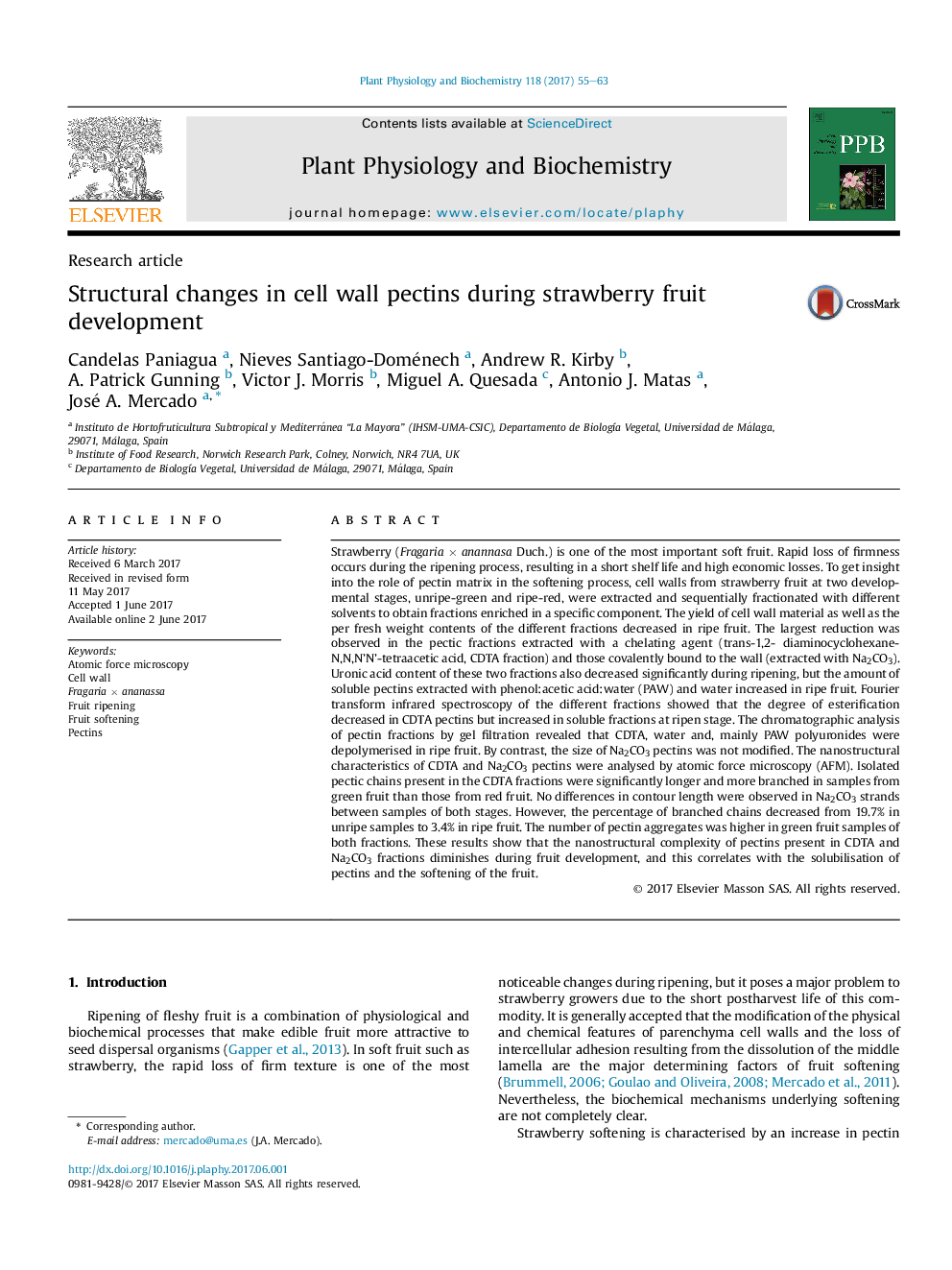| کد مقاله | کد نشریه | سال انتشار | مقاله انگلیسی | نسخه تمام متن |
|---|---|---|---|---|
| 5515421 | 1541903 | 2017 | 9 صفحه PDF | دانلود رایگان |
- Nanostructural changes in pectins during strawberry development have been studied.
- Soluble pectins increase during ripening at the expense of bound pectins.
- Chelated pectins are shorter in ripe fruit; length of covalent pectin is unaffected.
- Branching of bound pectins decreases in ripe fruit.
- Loss of nanostructural pectin complexity contributes to strawberry fruit softening.
Strawberry (Fragaria à anannasa Duch.) is one of the most important soft fruit. Rapid loss of firmness occurs during the ripening process, resulting in a short shelf life and high economic losses. To get insight into the role of pectin matrix in the softening process, cell walls from strawberry fruit at two developmental stages, unripe-green and ripe-red, were extracted and sequentially fractionated with different solvents to obtain fractions enriched in a specific component. The yield of cell wall material as well as the per fresh weight contents of the different fractions decreased in ripe fruit. The largest reduction was observed in the pectic fractions extracted with a chelating agent (trans-1,2- diaminocyclohexane-N,N,N'N'-tetraacetic acid, CDTA fraction) and those covalently bound to the wall (extracted with Na2CO3). Uronic acid content of these two fractions also decreased significantly during ripening, but the amount of soluble pectins extracted with phenol:acetic acid:water (PAW) and water increased in ripe fruit. Fourier transform infrared spectroscopy of the different fractions showed that the degree of esterification decreased in CDTA pectins but increased in soluble fractions at ripen stage. The chromatographic analysis of pectin fractions by gel filtration revealed that CDTA, water and, mainly PAW polyuronides were depolymerised in ripe fruit. By contrast, the size of Na2CO3 pectins was not modified. The nanostructural characteristics of CDTA and Na2CO3 pectins were analysed by atomic force microscopy (AFM). Isolated pectic chains present in the CDTA fractions were significantly longer and more branched in samples from green fruit than those from red fruit. No differences in contour length were observed in Na2CO3 strands between samples of both stages. However, the percentage of branched chains decreased from 19.7% in unripe samples to 3.4% in ripe fruit. The number of pectin aggregates was higher in green fruit samples of both fractions. These results show that the nanostructural complexity of pectins present in CDTA and Na2CO3 fractions diminishes during fruit development, and this correlates with the solubilisation of pectins and the softening of the fruit.
Journal: Plant Physiology and Biochemistry - Volume 118, September 2017, Pages 55-63
